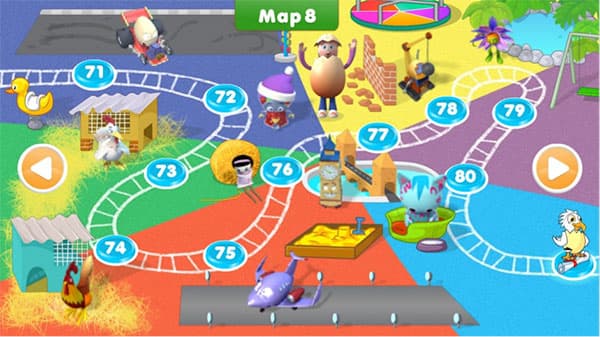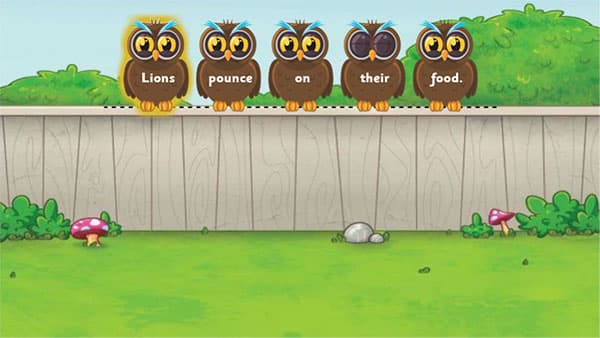


How to Help Children with Autism Learn to Read

Children with autism, including nonverbal children, learn to read and comprehend better with programmes that capitalise on their strengths. FREE Trial
Autism is a developmental difference that affects the way a child approaches language, communicates, plays and relates to others.
Because autism affects language, this can have a strong effect on reading comprehension. But this is not to say that reading and autism are mutually exclusive.
There are a number of different conditions that fall within the broader category of pervasive developmental disorder (or PDD), which include:
autism spectrum disorder
Rett syndrome (RTT)
childhood disintegrative disorder (CDD)
pervasive developmental disorder not otherwise specified (PDD-NOS).
Try Reading Eggs for FREE today
Reading Eggs is an online reading programme that helps children with autism learn how to read. Try it for FREE today!
Some signs of autism
There is no fixed set of behaviours or markers of autism. Instead, some or all of the following behaviours will be evident, either to a lesser or greater degree:
Problems with communication (using and understanding language)
Difficulty relating to others
Difficulty with changes in routine or change in familiar surroundings
Repetitive body movements or behaviour.
Of course, no two children are the same, which holds true for a child's experience of autism or PDD. Some children do not speak (nonverbal), while others may speak but use language that features repeated phrases or conversations.
Children with stronger language skills may be able to concentrate on certain topics but have difficulty with understanding abstract ideas.
Reading and comprehension strategies for children with autism
While language is often strongly affected by autism, this does not mean that reading and autism cannot work together. It only means that autism presents a unique set of challenges for a child, as well as for parents and teachers.
Reading and visual accompaniment
Research has found that people with autism are relatively better at visual-spatial processing. This may explain why children with autism may struggle with verbal instruction or the decoding of written text, but thrive with instruction that incorporates visual accompaniment, particularly visuals that correspond seamlessly with the text with which they are engaging.

Structured reading programmes like Reading Eggs use visual accompaniments to help autistic children learn to read and comprehend. Free trial.
In regards to reading and autism, the learning environment needs to be organised so that the reading instruction is structured and predictable. Lessons need to follow a predictable format so that the child can become familiar and comfortable with the learning program, and know what to expect.
All learning should be visual as well as aural and written, particularly if the child enjoys and responds well to visuals.
Additionally, parents as well as teachers should be involved at all levels of instruction so that the learning activities and approaches can carry over into the home as well as school.
Benefits of reading programs for children with autism
According to a pair of small studies, a reading program that capitalises on the strengths of children with autism provides important benefits. It improves their reading comprehension and establishes new connections between areas of the brain involved in understanding language.
The benefits were observed in reading programs that encourage students to visualise images when they read and hear language.
How Reading Eggs helps children with autism read
Children with autism have many strengths, and it's important for parents and teachers to use strength-based models of intervention to support growth and development.
Structured online reading programs that work with these strengths are powerful tools to use for children with autism. Reading Eggs offers children a whole suite of individualized instruction in an engaging and child-friendly learning environment that kids enjoy interacting with.

Children with autism benefit from individualised and visual learning that is nurturing, supportive and fun.
From the first moment that a child uses Reading Eggs, they are immersed in a highly visual learning world that is fun and enjoyable to use.
The very first lessons for pre-readers and very early readers take place in a safe and friendly virtual world, moving the kids from a zoo, to a playground to a theme park.
Children love moving their unique characters along a path, which looks very similar to a board game.
High-interest, visual reward systems
The one-on-one lessons feature interactive reading games for young kids and aren't the only fun element of the program.
Reading Eggs encourages children to complete self-paced learning activities and continue working through the program by motivating them with age-appropriate reward systems.
These reward systems are visual, high-interest, compelling and child-centred, and are activated each time a child completes a learning activity or a lesson.
Predictable format and patterns
The lessons in Reading Eggs follow a predictable format, and the rewards follow a predictable pattern as well. The program offers both parents and teachers a means of instruction that can be used both at home and at school.

Children are able to log in online, from anywhere and on any device, to complete lessons and continue their literacy learning, which supports both the child with autism and their reading, as well as the teachers and parents in their educational work.
Nonverbal children with autism
Reading Eggs helps nonverbal children with autism learn to read and comprehend by encouraging them to interact with the reading lessons and e-books. The activities in the program teach them to recognize words paired with pictures, and audio options are provided for all e-books under level 20.
See how Reading Eggs works
We offer all new parents a free trial to see how Reading Eggs works for their child. It only takes a few minutes to get started.
Try Reading Eggs here to see how your child's reading and comprehension skills can improve in just weeks.
Reading Eggs testimonials
My students have found Reading Eggs to be invaluable to their learning. I teach students with autism and have a student who knew around 8–10 letters of the alphabet at the beginning of the year. Through classwork and Reading Eggs, he is now reading at a level 4 PM and writing simple words.”
– Jenine Watson, Latham Primary School
I would just like to say how wonderful this program is. My son has autism and has made more progress with this program than any other method we have employed at home and school so far. I think you should approach the autism societies across the world and promote Reading Eggs to them. I think they would find it invaluable. Thank you for helping my son to read in a most enjoyable manner.”
– Annie
Thank you Reading Eggs. My son is 3 and diagnosed with high-functioning autism spectrum disorder. He has a significant speech delay and is responding so well to your program because he loves books and computers. We are only up to level 9 and already Reilly is reading words and saying the words and letters as he reads them. Reading Eggs is just what we have been searching for and has contributed to our son's speech significantly!! You should consider marketing this for children with autism spectrum disorders.”
– Linda






